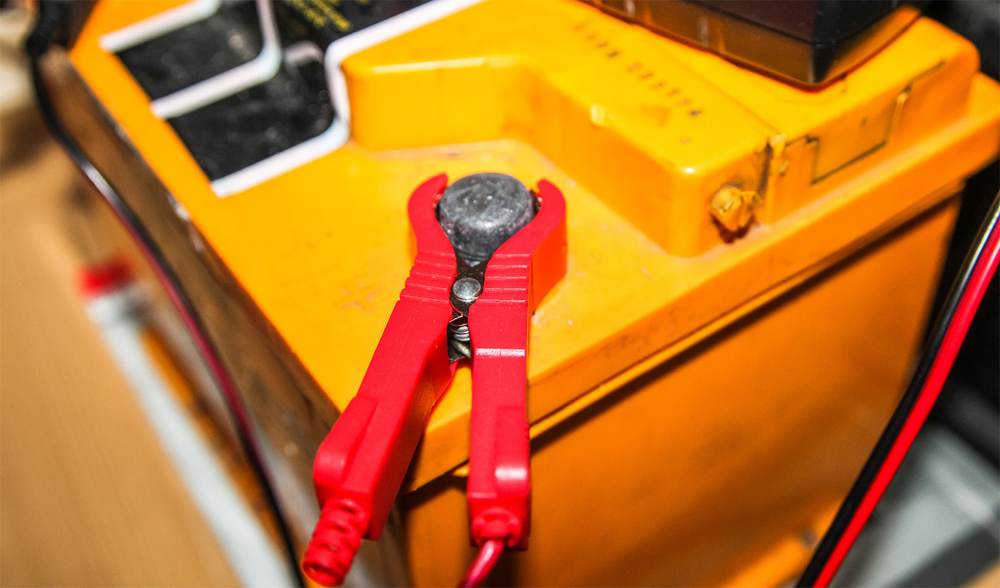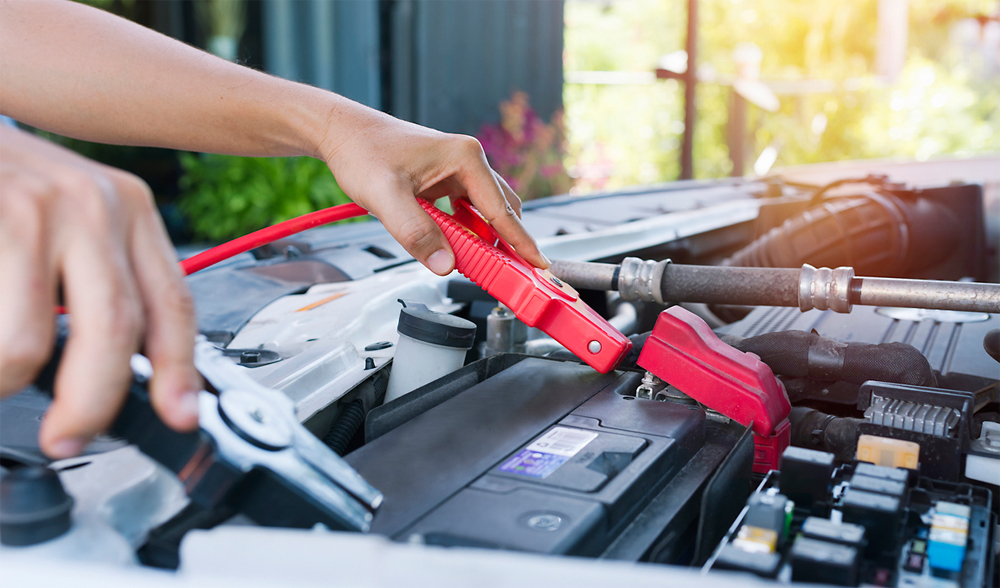There are many reasons why our cars cannot start properly. Long periods of disuse can cause the battery to run down naturally. On the contrary, long-term use and lack of maintenance can also lead to battery sulfation problem, which reduces its storage capacity. When we have a car that cannot start properly due to battery problems, we usually have a few options. The first option that comes into our mind is that we can charge the battery through a battery charger. Some car battery chargers also have microcomputer pulse repair function, which can repair and rejuvenate the battery. We can also use a jump starter to give the car an emergency startup. In addition, jumper cables can sometimes be used for emergency startup in case of battery problems.
In this blog, we will take a look into these above-mentioned methods that can solve car startup problem. Through the introduction and comparison, hopefully the most appropriate solutions can be chosen when there is a car startup problem caused by defect batteries.

Car Battery Chargers
Many common battery exhaustion problems can be effectively avoided by using car battery chargers. They have certain circuits that can convert alternating current to direct current. Therefore, they can be used to charge car batteries as long as there is a power outlet. Some car battery chargers even have pulse repair function in addition to basic charging function. They can be used to diagnose and repair defect batteries, and help restore battery charging and discharging capacity, as well as storage capacity. The most common voltage settings for car battery chargers are 12V and 24V. There are a few products can be used to charge 48V batteries. They should be selected correctly according to the voltage of the car battery. In our previous blog On Choosing the Right Lead Acid Battery Chargers, we have introduced how to choose a car battery charger that will perfectly match your car battery.
Advantages of Car Battery Chargers
Typical car battery chargers are easy to use, which are also safe and reliable. From the perspective of parameters, the higher the output current of the charger, the higher its charging speed will be. For daily use, a car battery charger is easy to carry. They can be used as long as there is a power outlet. There are even solar powered car battery chargers on the market today. They do not need to be plugged into an electrical outlet. Only if there is sunlight, they can be used to charge car batteries. To own a car battery charger will be a little money investment, but the benefits it will provide you will be much greater.
Disadvantages of Car Battery Chargers
Actually, rather than the disadvantages in car battery chargers, it is the characteristics of car batteries that determine the basic function of the charger. For one thing, they cannot charge car batteries very quickly. Car battery chargers can take up to 12 hours or more to recharge a car battery. If the charging current of a car battery charger is 2 amps, and the capacity of the battery is 48 amps, through simple calculation, we can tell that the charging time will be around 24 hours. Since the majority of batteries used in cars are lead acid batteries, the charging time must be monitored when using a car battery charger. O5454therwise, it is easy that the battery may get overcharged, which will affect the use of the battery in the future. The overcharging of a lead acid battery will accelerate the evaporation of electrolyte within, resulting in damage to the battery plates. Severe overcharging problem can even cause the swelling of lead acid batteries and other serious problems.
Moreover, car battery chargers can only be used where there is a power supply. They are inferior in this compared with jump starters. Next, let’s take a close look at jump starters.

Jump Starters
A Jump Starter can be regarded as a starter or a portable and packed battery. Their main function is to give the car an emergency startup when the battery is dead. A jump starter can provide an instant high current to a car battery, which allows the vehicle to start without worrying about charging the battery. Compared with the use of jumper cables that require the help of a car with a battery in good condition, when a jump starter works, it requires no help from another car. Also, when a jump starter is used, only one person will be needed. When a car is started with the help of a jump starter, it should be kept running for over 20 minutes. During that period, the driver can drive the car to any place where the battery can be recharged or be repaired.
A jump starter can also be used to diagnose whether there is a battery problem. The basic steps are as follows: Use the jump starter to start the car and keep it running for a few minutes. Turn off the engine and wait a few seconds before restarting it again. If the car cannot start properly, it is certain that there is a battery problem.
Advantages of Jump Starters
The main difference between a jump starter and a car battery charger is that a jump starter can provide a quick burst power which might be at hundreds or even thousands of amperes to a car. This will make the battery usable in a matter of seconds, allowing the car to start quickly. This is what a car battery charger can’t do. They provide the current which will be sufficient to start any consumer or commercial vehicle.
Disadvantages of Jump Starters
Compared with car battery chargers, if there are disadvantages in jump starters, they are there since they are designed to directly start the car in case of battery problems instead of charging the battery. They can’t recharge car batteries for hours like car battery chargers, nor are they capable of repairing dead batteries. In terms of portability, jump starters tend to weigh more than battery chargers since they need to contain batteries in their structures. Moreover, they also tend to be more expensive than regular car battery chargers.

In the above, we have introduced the functions, features, advantages and disadvantages of car battery chargers and jump starters. Their different uses are determined by their differentiated functional positioning. Car battery chargers focus on providing long-period charging function for car batteries, with certain products are capable of battery restoration capability. Jump starters, equipped with built-in batteries, can be used for a quick startup of a car by providing an instant high current.
In addition to car battery chargers and jump starters, jumper cables are also used sometimes for emergency car startup problems due to car batteries. However, jumper cables are more difficult to operate than jump starters. It involves the correct connection of the battery electrodes and the metal parts of a car. In addition, when using jumper cables to help start a car, the user will need to confront a lead acid battery directly. So, there will sometimes be risk concerns if there is a leak of sulfuric acid or even explosion. Also, when jumper cables are used, the operation requires the assistance from another car with a lead acid battery in good condition. Therefore, on the whole, to use a jump starter will be a better choice than the use of jumper cables when solving a car startup problem with a defect battery.
